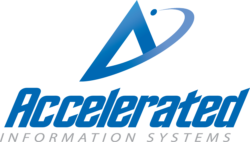Is the constant game of ‘Where in the World is that File’ a concern to your performance or just business as usual? The case for building a proper digital file structure is both a matter of functionality and performance. For most, road blocks include creating too simple of a structure and having folders over-filled with files; or worse, creating too complex a structure where it is nearly impossible to find what you are looking for.
The easiest way to build a successful file structure is, in fact, to not focus on the structure at all. What we need to focus on is the POLICY in which we want our documents filed, and how we can enforce that policy each and every time.
For example, let’s say you work in an office where many different digital files are created, from original .doc files to complex .xlsx spreadsheets, to finalized .pdf files. Each files is named under 2 circumstances at this point: 1) The person doing the filing, and 2) what they feel is the most important thing about that document. Without a policy in place, a letter to an important client might become Letter-AcmeInc.doc; this however gives us no idea when the letter written, what the contents were, etc. Now you might say “Well, Chris, I make sure I always include what the letter is about along with the client name.” That’s all well and good, but is everyone in the organization following the exact same policy? The answer is no, and not because they do not want to, but because it is impossible to remember every policy about every document, and where it can be filed. Here is how we handle both the consistent naming issue AND the filing policy in one step.
In Laserfiche, when a document is saved, we can force users to enter simple metadata fields before the system allows the save. Metadata can include anything you wish, from account numbers to eye color, but in this instance we would want to collect the following: Client Name, Document Type, Department, (Date and Time creation are captured every time). Because we are collecting this data to use later when naming and filing, the person saving the document can use any generic name or number, or not name it at all, as Laserfiche will handle this for us. This is why, as we discussed before, it is the POLICY that is most important to have written and enforced, not the action which is written and enforced.
Metadata for this PDF we are creating would be entered as such: Company Name: Acme Co.; Document Type: Invoice; Department: Accounting (for further enforcement, metadata can be drop down boxes, forcing users to choose from a preselected list of options). Based on this information, Laserfiche will simultaneously rename this document “Acme Co.-Invoice.pdf” [Company Name]-[Document Type] and file it under the folder path L:\\Accounting Department\Acme Co.\Invoices\Acme Co.-Invoice.pdf
Now, let’s say this was the first time you have ever received an invoice from Acme Co. That’s OK! Since Laserfiche is following your file structure POLICY, the folders are created as needed. As new companies are added, your folder structure will grow naturally, and all of your filing policies are guaranteed to be enforced!
So when you are stuck on the task of “How do I build a file structure” or “what is the best file structure”, shift your thinking and ask yourself and your organization if you really want to have to re-evaluate your folder structure every few years as the business needs change, or do we want to implement a system that will ensure and enforce our policies as we grow, expand and need to adapt?

